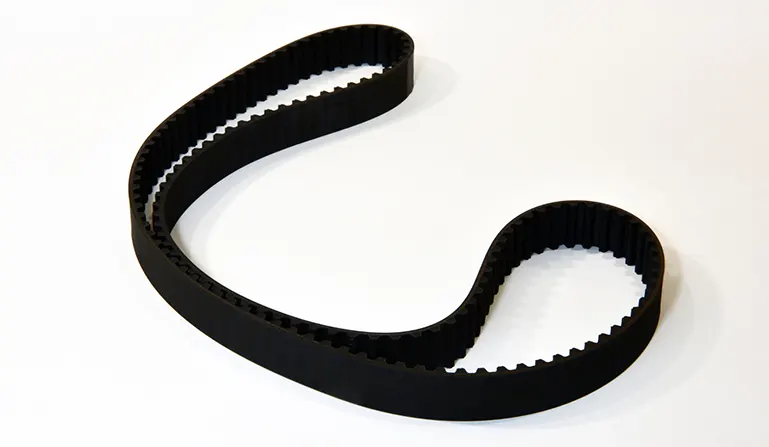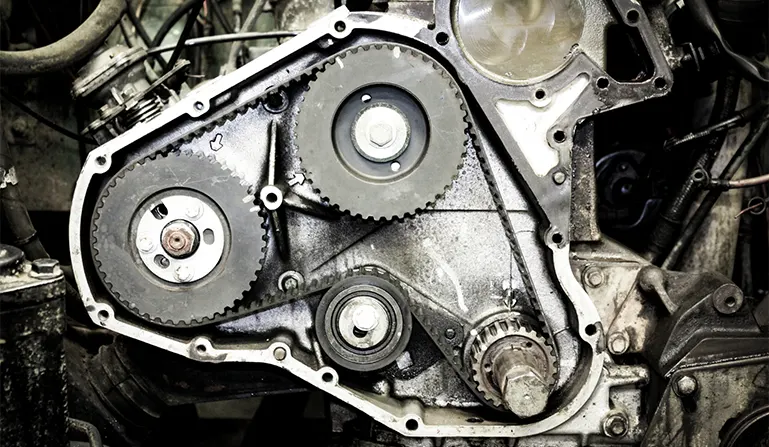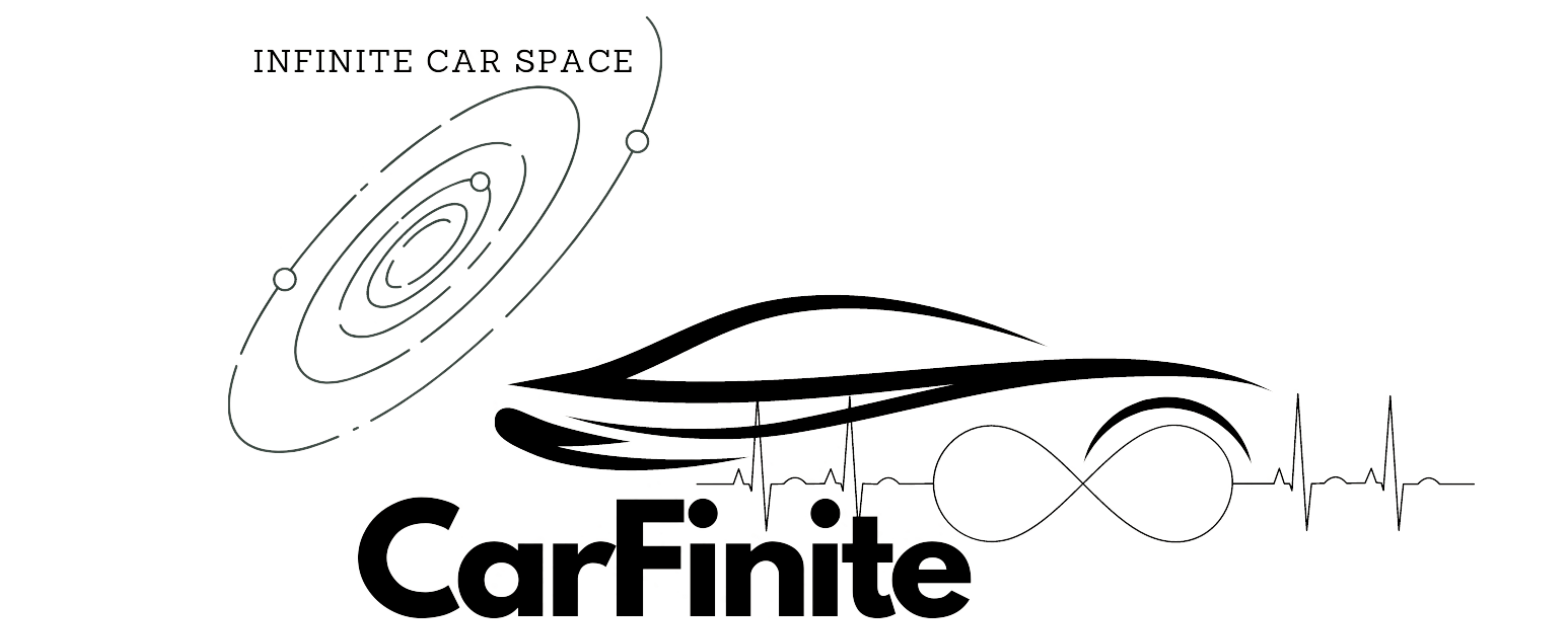Timing belts, as the name defines it, coordinate the timing between the crankshaft and the camshaft.
It is an integral part of the internal combustion engine and understanding the role of the timing belt and how to care for it will take a long way down the road.
What does a timing belt do?
A timing belt in the car has 2 main functions.
1. Open and close the intake and exhaust valves at the proper time
To understand the intake and exhaust process, let us see the 4 combustion phases in a four-stroke engine.
1st stroke – The intake phase: Air and fuel are taken in through the intake valves in the cylinders. During the intake phase, the intake valves need to be opened and the exhaust valves should be closed.
2 & 3 Strokes – Combustion phase and Compression phase: When the intake valve is closed, the piston moves up the cylinder and air is mixed with the fuel. Then the air and fuel mixture is compressed and then the spark plugs ignite them. At this time, all intake and exhaust valves need to be closed.
4th stroke – Exhaust phase: The burnt air and fuel are emitted through the cylinder. The During this time, only the exhaust valves need to be opened and the intake valves should remain closed.
| Stroke | Name | Action | Action |
| 1 | Intake phase | Air and fuel are taken in | Intake valves open, exhaust valves closed |
| 2 & 3 | Combustion and Compression phase | Air and fuel are compressed and ignited | Intake and exhaust valves closed |
| 4 | Exhaust phase | Remaining air and fuel are emitted | Intake valves closed, exhaust valves open |
2. Synchronize the movement of various engine components
During the intake and exhaust phases, the camshaft opens and closes the intake valves and the exhaust valves.
On the other hand, the piston which compresses the air and fuel mixture in phases 2 and 3 is attached to a crankshaft. The crankshaft turns the movement of the piston into a rotational movement.
The timing belt guarantees the synchronization of the camshaft and the crankshaft, so the combustion happens smoothly.

Does every car have a timing belt?
The simple answer is no. A car has either a timing belt or a timing chain. The easiest way to know of your car has a timing belt or a chain is to refer to the owner’s manual.
If the manual does not specify the intervals of changing the timing belt, your car may have a timing chain. Unlike timing belts, a timing chain is designed to last during the lifetime of your car.
4 Early Warning Signs of a Failing Timing Belt
A timing belt is a rubber belt and is subject to wear and tear over time. Watch out for the following failing signs of a timing belt.
- Visible Damage: You can check the timing belt manually for any cracks, fraying, or missing teeth on the surface.
- Squeaking Noise: If the engine gives a high-pitched squeaking noise, it may be an indication of a failing timing belt.
- Engine Misfire: Also, a worn-out timing belt can cause the engine to misfire or run poorly.
- Engine Failure: Sometimes, an engine can totally fail due to a worn-out timing belt.
Tip: If you see any of the above issues, go to a professional mechanic to get the timing belt checked.
How long a timing belt would last?
Timing belts are designed to last between 60,000 and 100,000 miles, depending on the manufacturer and the specific vehicle. However, some timing belts can last much longer, depending on the operating conditions and maintenance.
What Happens When a Timing Belt Snaps While Driving?
- Engine Damage: If the timing belt breaks, there is no mechanism to synchronize the timing among the components. As a result, the intake and exhaust valves can collide with the piston causing damage to the engine.
- Loss of Power Steering: Some cars have a power steering pump driven by the timing belt. When it the belt breaks, it becomes difficult to steer the vehicle
- Electrical System Failure: Also, the timing belt drives the alternator in a vehicle. The alternator charges the battery and powers the vehicle’s electrical system. If the belt breaks, the alternator may stop working, causing a loss of power to the electrical system.
What are an interference engine and a non-interference engine?
An interference engine is a type of engine where the piston and valve paths intersect, meaning if the timing belt breaks, the piston can collide with the valves, causing engine damage.
Conversely, a non-interference engine is designed so that the piston and valve paths do not intersect; thus, if the timing belt breaks, the piston does not strike the valves, avoiding immediate engine damage.
Both designs have their own advantages and disadvantages in terms of performance, maintenance, and potential repair costs.
Is Repairing a Broken Timing Belt Worth the Cost?
Whether repairing a broken timing belt is worth the cost largely depends on the extent of any resulting engine damage and the overall condition and value of the vehicle. If the broken belt has caused significant damage to the engine components, repair costs can be substantial and may not be economically viable for older vehicles.
Conversely, if the vehicle is relatively new and in good condition, repairing might be a worthwhile investment. Always compare repair costs with the vehicle’s value and consider future reliability when making your decision.
The Cost of Timing Belt Replacement
The cost of timing belt replacement can vary greatly depending on several factors, including the make and model of the vehicle, the type of engine, and the cost of labor.
According to AutoZone, a timing belt kit is between $100-$350. The cost of labor will also a factor to consider here.
Although the timing belt is inexpensive, the labor cost may be high. That is due to the time-consuming and labor-intensive dismantling process. Also, the rime tensioner can be replaced at the same time.
How to Replace the Timing Belt?
Replacing the timing belt in a car necessitates a thorough and precise procedure to ensure the engine functions optimally and to prevent potential mechanical failures. Here’s a structured guide:
- Disconnect the Battery: Ensure safety by disconnecting the vehicle’s battery.
- Access the Timing Belt: Remove components like the serpentine belt and timing belt cover to access the timing belt.
- Align Timing Marks: Ensure the camshaft and crankshaft timing marks are aligned according to the vehicle’s manual.
- Remove Old Timing Belt: Release the tensioner and carefully remove the existing timing belt.
- Inspect Components: Check and replace if necessary, related components like pulleys, tensioners, and the water pump.
- Install New Timing Belt: Place the new belt, ensuring it aligns accurately with the timing marks.
- Set Belt Tension: Adjust the tensioner to achieve the correct belt tension.
- Reassemble: Replace the timing belt cover and any other components removed.
- Test: Start the engine to verify the new belt is installed correctly and is functioning properly.
while the steps provide a general guide, it is imperative to consult the specific vehicle model’s manual for detailed instructions and adhere to all safety precautions.
Given the intricate nature of timing belt replacement and the high stakes involved regarding engine functionality, professional assistance is often recommended to safeguard against errors and ensure a successful replacement.

How to Maintain Your Timing Belt System for Optimal Performance?
Proper care and maintenance of the timing belt system are essential for protecting its smooth operation and long lifespan. To maintain your timing belt system, consider the following tips:
- Replace the timing belt according to manufacturer’s recommendations
- Refer to the manufacturer’s recommended maintenance schedule for your timing belt and follow it for the best performance and longevity.
- Conduct regular inspections
- Generally, a timing belt is designed to last 60, 000 -100, 000 miles. However, you can conduct regular inspections such as cracks or abrasions and make sure the timing belt is in good condition
- Maintain proper tension
- The timing belt should be properly tensioned for efficient and long-lasting performance. If it’s too loose, it can slip and cause improper engine timing, while if it’s too tight, it can wear out faster or damage other engine components.
- Keep it clean
- Prevent contamination of the timing belt by keeping it clean and free of dirt, dust, oil, and other contaminants.
- Maintain engine components
- Ensure that engine components such as pulleys and tensioners are in good condition and functioning properly to maintain the performance and longevity of the timing belt.
- Replace when needed
- Replace the timing belt when it reaches the manufacturer’s recommended mileage or age. Also, a timing belt needs to be replaced when it is worn out to prevent serious engine damage.
- Avoid overheating
- Overheating can damage the timing belt, so regularly check and maintain the cooling system to keep the engine cool.
By following these steps, you can help extend the life of your timing belt system and ensure reliable and efficient performance. Regular maintenance and timely replacement of worn or damaged belts are crucial to prevent downtime and maintain a smooth-running system.
Top Timing Belt Manufacturers
1.Gates Corporation: A leading manufacturer of high-quality timing belts, Gates is known for its innovative products and exceptional quality standards.
2. Continental AG: Continental AG is a global leader in the development and manufacture of timing belts, offering a wide range of products for a variety of applications.
3. Bando Chemical Industries: Bando is a leading manufacturer of timing belts, with a reputation for high-quality products and a strong commitment to innovation.
4. Mitsuboshi Belting: Mitsuboshi Belting is a well-respected manufacturer of timing belts, known for its advanced technology and reliable products.
5. Dayco: Dayco is a top provider of timing belts and related products, with a focus on high-quality and cost-effective solutions for its customers.
These are some of the top timing belt manufacturers in the industry, offering a wide range of products and solutions for various applications. These brands are known for their quality, reliability, and innovation, making them a trusted choice for automotive and industrial applications.

John Smith, a Los Angeles-based car specialist and automotive writer, boasts over 20 years in the industry. With a background as a master technician and a decade-long writing stint at notable automotive publications, John now shares his expansive knowledge on CarFinite, simplifying car maintenance for readers.

